#Jacques Stella
Explore tagged Tumblr posts
Text

Christ on the Road to Emmaus
Artist: Jacques Stella (French, 1596-1657)
Date: 17th century
Medium: Oil on canvas
On the Road to Emmaus | Luke 24: 14-24, NIV
Now that same day two of them were going to a village called Emmaus, about seven miles from Jerusalem. They were talking with each other about everything that had happened. As they talked and discussed these things with each other, Jesus himself came up and walked along with them; but they were kept from recognizing him.
He asked them, “What are you discussing together as you walk along?”
They stood still, their faces downcast. One of them, named Cleopas, asked him, “Are you the only one visiting Jerusalem who does not know the things that have happened there in these days?”
“What things?” he asked.
“About Jesus of Nazareth,” they replied. “He was a prophet, powerful in word and deed before God and all the people. The chief priests and our rulers handed him over to be sentenced to death, and they crucified him; but we had hoped that he was the one who was going to redeem Israel. And what is more, it is the third day since all this took place. In addition, some of our women amazed us. They went to the tomb early this morning but didn’t find his body. They came and told us that they had seen a vision of angels, who said he was alive. Then some of our companions went to the tomb and found it just as the women had said, but they did not see Jesus.”
#painting#on the road to emmaus#christianity#resurrected christ#disciples#men#gospel of luke#bible story#bible scriptures#oil on canvas#christian art#jacques stella#french painter#landscape#jesus#christ#angels#pole#trees#horizon#french art#artwork#biblical#holy bible
24 notes
·
View notes
Photo

Christus, gedient von den Engeln, ca. 1650 von Jacques Stella
Öl auf Leinwand, Galleria degli Uffizi, Florence, Italy
#Jacques Stella#christentum#religion#glaube#kunst#gemälde#meisterwerk#kunstdruck#museum#galerie#kunstwerk#kirche#italy#galleria degli uffizi#galleria#gallery#uffizi#italien#oil painting#oil on canvas#angels#christ#christus#engel#art
15 notes
·
View notes
Text
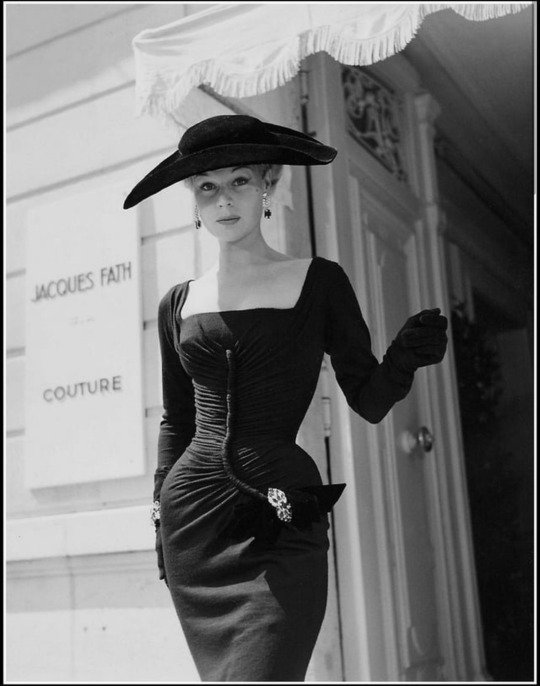
Stella Tenbrook, 1953 - photographed by Walde Huth as she models a cocktail dress designed by Jacques Fath,
#stella tenbrook#aesthetic#vintage#50s pinup#50s fashion#50s aesthetic#50s hollywood#50s style#50s movies#couture#jacques fath#elegance
71 notes
·
View notes
Text
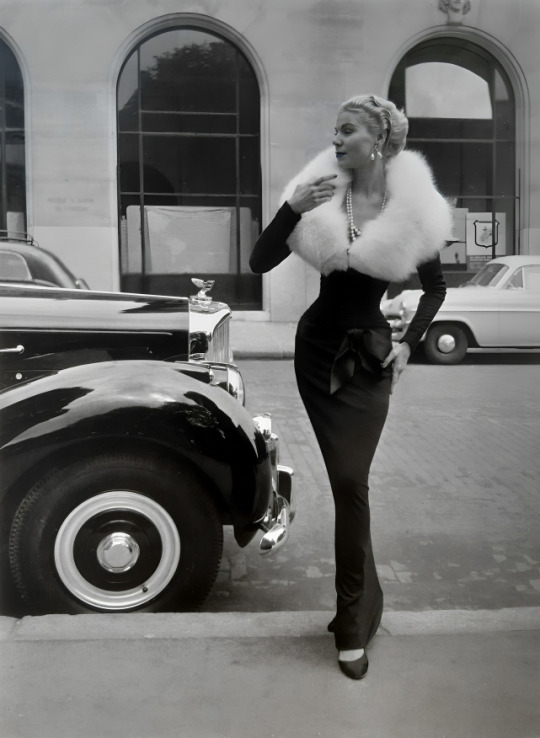

"Colonna"
Jacques Fath Haute Couture Collection Fall/Winter 1954-55 Stella Marais wears “Colonna”, a black sheath dress with an ermine-trimmed collar. Photo Willy Maywald.
Jacques Fath Collection Haute Couture Automne/Hiver 1954-55 Stella Marais porte "Colonna", une robe fourreau noir au col garni d'hermine. Photo Willy Maywald.
#collection haute couture#french designer#french style#jacques fath#fashion 50s#1954-55#fall/winter#automne/hiver#stella marais#willy maywald#colonna#evening dress#robe fourreau#robe du soir#ermine#sheath dress#hermine
27 notes
·
View notes
Note
niceys positive anon!! i don't agree with you on everything but you are so clearly like well read and well rounded that you've helped me think through a lot of my own inconsistencies and hypocrises in my own political and social thought, even if i do have slightly different conclusions at times then u (mainly because i believe there's more of a place for idealism and 'mind politics' than u do). anyway this is a preamble to ask if you have recommended reading in the past and if not if you had any recommended reading? there's some obvious like Read Marx but beyond that im always a little lost wading through theory and given you seem well read and i always admire your takes, i wondered about your recs
it's been a while since i've done a big reading list post so--bearing in mind that my specific areas of 'expertise' (i say that in huge quotation marks obvsies i'm just a girlblogger) are imperialism and media studies, here are some books and essays/pamphlets i recommend. the bolded ones are ones that i consider foundational to my politics
BASICS OF MARXISM
friedrich engels, principles of commmunism
friedrich engels, socialism: utopian & scientific
karl marx, the german ideology
karl marx, wage labour & capital
mao zedong, on contradiction
nikolai bukharin, anarchy and scientific communism
rosa luxemburg, reform or revolution?
v.i lenin, left-wing communism: an infantile disorder
v.i. lenin, the state & revolution
v.i. lenin, what is to be done?
IMPERIALISM
aijaz ahmed, iraq, afghanistan, and the imperialism of our time
albert memmi, the colonizer and the colonized
che guevara, on socialism and internationalism (ed. aijaz ahmad)
eduardo galeano, the open veins of latin america
edward said, orientalism
fernando cardoso, dependency and development in latin america
frantz fanon, black skin, white masks
frantz fanon, the wretched of the earth
greg grandin, empire's workshop
kwame nkrumah, neocolonialism, the last stage of imperialism
michael parenti, against empire
naomi klein, the shock doctrine
ruy mauro marini, the dialectics of dependency
v.i. lenin, imperialism: the highest stage of capitalism
vijay prashad, red star over the third world
vincent bevins, the jakarta method
walter rodney, how europe underdeveloped africa
william blum, killing hope
zak cope, divided world divided class
zak cope, the wealth of (some) nations
MEDIA & CULTURAL STUDIES
antonio gramsci, the prison notebooks
ed. mick gidley, representing others: white views of indigenous peoples
ed. stuart hall, representation: cultural representations and signifying pratices
gilles deleuze & felix guattari, capitalism & schizophrenia
jacques derrida, margins of philosophy
jacques derrida, speech and phenomena
michael parenti, inventing reality
michel foucault, disicipline and punish
michel foucault, the archeology of knowledge
natasha schull, addiction by design
nick snricek, platform capitalism
noam chomsky and edward herman, manufacturing consent
regis tove stella, imagining the other
richard sennett and jonathan cobb, the hidden injuries of class
safiya umoja noble, algoriths of oppression
stuart hall, cultural studies 1983: a theoretical history
theodor adorno and max horkheimer, the culture industry
walter benjamin, the work of art in the age of mechanical reproduction
OTHER
angela davis, women, race, and class
anna louise strong, cash and violence in laos and vietnam
anna louise strong, the soviets expected it
anna louise strong, when serfs stood up in tibet
carrie hamilton, sexual revolutions in cuba
chris chitty, sexual hegemony
christian fuchs, theorizing and analysing digital labor
eds. jules joanne gleeson and elle o'rourke, transgender marxism
elaine scarry, the body in pain
jules joanne gleeson, this infamous proposal
michael parenti, blackshirts & reds
paulo freire, pedagogy of the oppressed
peter drucker, warped: gay normality and queer anticapitalism
rosemary hennessy, profit and pleasure
sophie lewis, abolish the family
suzy kim, everyday life in the north korean revolution
walter rodney, the russian revolution: a view from the third world
#ask#avowed inframaterialist reading group#i obviously do not 100% agree with all the points made by and conclusions reached by these works#but i think they are valuable and useful to read
1K notes
·
View notes
Text

The Triumph of Galatea by Jacques Stella
#art#art history#painting#artwork#museum#museums#history#culture#vintage#classicism#mythological painting#french art
109 notes
·
View notes
Text
Season 2 is the tales of Crowley Hoffmann, *part 2*
I guess this has to be a series now too. Part 1 l Part 2
I'm doing a series on the (frankly) astounding amount of parallels between the Powell & Pressburger movie The Tales of Hoffmann and S2 of Good Omens. I really recommend part 1 first. 7. Green is evil So if you've wondered to yourself why Hell has changed so much, colour-wise in S2 vs S1, I have come with answers! Here's a fun comparison between the two hells :

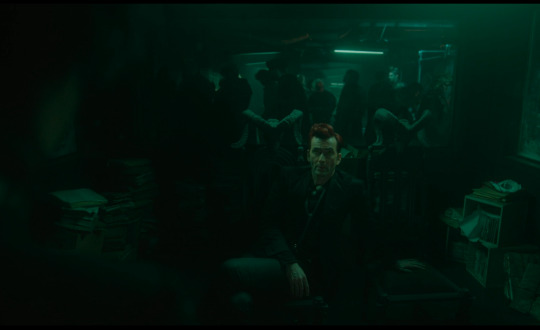
Now let's looks at the the evil admin exchange in the Tales off Hoffmann :

(The Tales of Hoffmann, Lindorf takes the contract in The Automaton Ball)
Whenever something evil happens in "The automaton ball" sequence, the light changes to this sickly green. Colour is THE important symbolism in Hoffmann, so now we know green is evil. 8. All the main characters are present and accounted for I've already covered in part 1 how Crowley is Hoffmann, Aziraphale is Stella, and alluded to the fact that Lindorf (main bad guy) is the Metatron. Here's a more comprehensive list of all the characters, because they're all there. N.B. The same actors play multiple roles in The Tales of Hoffmann. Gabriel is Schlemil/Spalanzani/Franz Léonide Massine actually plays 3 characters in the movie : Franz, a housekeeper who sings the only funny song in the opera:
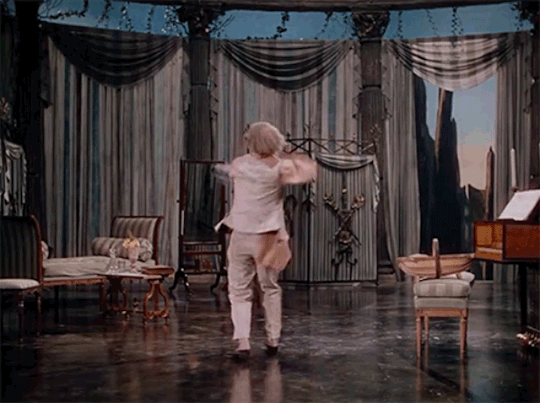

He also plays Spalanzani in Venice : A high ranking double agent who's been crossed by the bad guy Lindorf before, and who is currently hanging around Stella in Venice. He also plays Schlemil in The Automaton Ball, who helped make Stella the automaton and helps put on the ball. He strikes a deal with Lindorf to sell Stella.

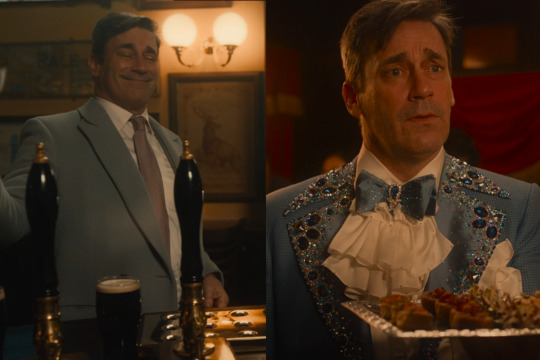
Muriel is the assistant Andreas
Andreas doesn't have much of a role in the story, they are mostly worry free and eager to please. They are there to be bribed by Lindorf to give him the key to Stella's dressing room, and the note for Hoffmann. I say they because even though this role is played by a man, this getup is EXTREMELY ambiguous for 1950s England.

Now look at the last scene of both the movie and S2 of good omens.

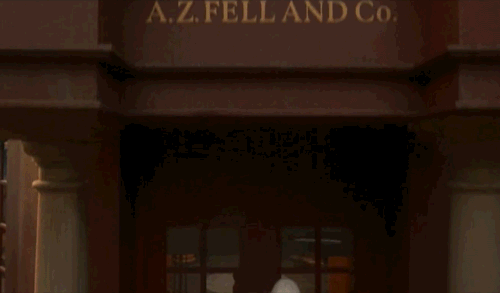
Shax is Nicklaus
In both casting and character, Shax is obviously Nicklaus. The all red outfit is a dead giveaway, but even the haircut in hell is similar. Nicklaus is Hoffmann's buddy, but they don't actually move the story forward or help him much. The fact that they're everywhere in the story but not really DOING much except casting doubt is pretty telling.

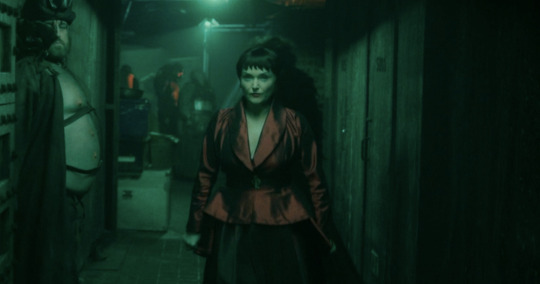
Beelzebub is the muse
Now we get into characters where's it's kind of important know know both the opera and the movie. The only character we seem to be missing in the movie version is Beez, but don't worry, I've got another male character now usually played by a woman dressed in Charlie Chaplin drag and their name is "The Muse". Basically, the muse in the opera is there to make sure Hoffmann does his job (being a poet) and isn't interested in the girl anymore (Stella).


Jacques Offenbach: The Tales of Hoffmann, The Muse & Lindorf, S2E6 Beelzebub
The Metatron is Lindorf
Lindorf is a major bad guy in both, but movie Lindorf has had all of his lines removed at the beginning, so he's the bad guy in the sense that he's doing all these bad things, and is the antagonist in every minisode and in real life. But we never really find out why. His evil genius speech is cut out of the movie, but is very much there in the opera. He's a shapeshifter, and takes on the form of 4 characters in the movie, all of whom hurt Hoffmann by ultimately taking Stella away from him.

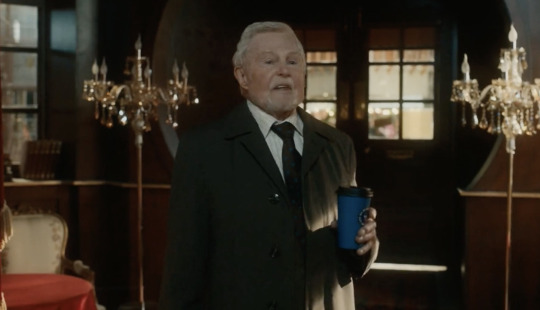
Here's Lindorf spying on Hoffmann in the prologue. And the reveal at the end when he comes to take Stella to "the temple of the gods"...
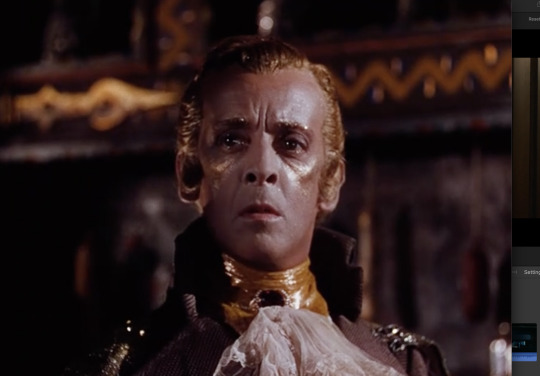
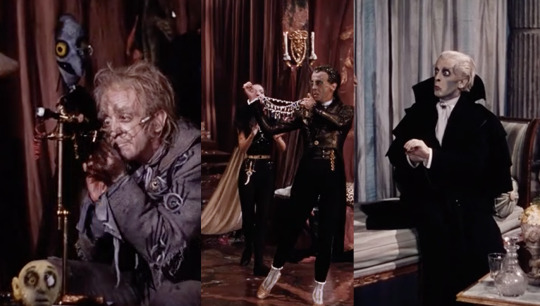
Here are his other three forms in the minisodes. By the way his name in the last one, I shit you not, is DR.MIRACLE. In each minisode he plays a pivotal role in removing Stella from Hoffmann, first by legal contract, second by convincing Stella to double-cross him for a shiny reward, and third by trapping Stella in a time loop and then straight up killing her and sending her to heaven (she gets resurrected no worries).
So my question for now is : Does the plot of season 2 ALSO follow the movie?
_____________________________________
Obviously, there's always more. Next post it's analysis time baby....
#good omens meta#art director talks good omens#good omens season two#go season 2#good omens 2#go meta#good omens season 2#crowley x aziraphale#aziraphale x crowley#aziracrow#the metatron#good omens spoilers#good omens
161 notes
·
View notes
Text

Christ on the Road to Emmaus
Artist: Jacques Stella (French, 1596-1657)
What happened on the road to Emmaus?
The events on the road to Emmaus are discussed in Luke 24. In this final chapter of Luke’s Gospel, we read of two disciples (Cleopas and one unnamed) of Jesus who were walking from Jerusalem to Emmaus on the day that Jesus rose from the dead. As they traveled, a man joined them - the resurrected Jesus, although they did not recognize Him. The man asked, “What is this conversation that you are holding with each other as you walk?” (Luke 24:17).
The two disciples were surprised that the man had not heard of the recent events that had Jerusalem in turmoil. They proceeded to tell the stranger of Jesus’ crucifixion and the report of His empty tomb. Jesus responded, “‘How foolish you are, and how slow of heart to believe all that the prophets have spoken! Did not the Christ have to suffer these things and then enter his glory?’ And beginning with Moses and all the Prophets, he explained to them what was said in all the Scriptures concerning himself.” (Luke 24:25-27).
So, as they walked, Jesus taught what the Old Testament had predicted about Himself. When they arrived in Emmaus that evening, the two disciples stopped to eat, and they asked Jesus to join them. He did, and as He broke the bread and blessed the meal, “their eyes were opened” (verse 31), and they recognized Him. Jesus then vanished.
Their response? Luke reports, “They got up and returned at once to Jerusalem. There they found the Eleven and those with them, assembled together and saying, ‘It is true! The Lord has risen’” (verses 33-34).
#religious art#christ#road#landscape#new testament#french painter#christian art#jacques stella#angels#tree#resurrection#jesus#gospel of look#christianity#bible scripture
13 notes
·
View notes
Note
do you have any names close to martyn or magnus ? ♥️

MARTYN / MARTINE︰ adrian. alain. amelia. andrée. annick. arwyn. august. aurora. benfrey. bernard. brigitte. cenobie. cersei. chantal. charlotte. christiane. christine. claire. clementine. cleos. concorde. corentino. cornelis. cyran. darryl. david. dominique. edel. elijah. emane. enda. evan. evangeline. evie. evlyn. famke. felix. finnlay. francoise. françois. genevieve. genevre. gracelynn. henry. hodel. imee. isabelle. isla. jacques. jaime. jamie. jammos. jan. janei. jannah. jean. jeremiah. jeyne. johanne. john. josan. joy. julian. lancel. lee. legate. lesley. lida. lola. luc. lucas. lucia. lucy. lythene. malyn. marc. marie. markise. martin. martina. martine. martini. martinique. martino. matilda. maude. mellara. melwys. meridian. merton. michel. michele. micheline. michelle. minerva. mira. monique. morice. morton. morya. myrddin. natassia. natividad. nicholas. nicky. oliver. owen. pascal. patrice. patrick. paul. pela. perriane. philippe. raina. red. reen. roman. ronel. rosalie. rosalynne. roslin. ryger. sereno. serge. sherees. shirei. silas. stella. stephane. summerlynn. sundance. sylvie. theodore. tion. tyrek. tyrion. tyta. venusita. vere. violet. véronique. walder. whalen. willem. winni. yagmur. yvon. zinia.

MAGNUS︰ adelaide. agnes. alexander. alistair. ambrose. amelia. anders. angus. anna. annabeth. asher. atlas. atticus. augustus. aurelius. aurora. bix. caius. cannon. cassius. chance. chanel. charlotte. christer. cosmo. cyrus. dorothea. douglas. emilie. felix. fergus. finn. freja. gannon. halo. hana. hazel. henry. hugo. ignatius. ishtar. jamie. jan. jana. jasper. john. lana. lazarus. lenore. louis. lucius. mackenzie. maconaquea. maddox. malcolm. maleah. malthe. marina. markus. marte. marus. maryse. mathias. matthias. maxence. maxim. maximos. maximus. mckenzie. mechanicus. megan. meghan. meguinis. mensonsea. mikkel. milo. mina. monchonsia. mátyás. nao. oda. oliver. olof. orion. otis. psyche. rasmus. remus. saber. scarlett. sebastian. shade. silas. sofie. sophie. sverre. synne. theodore. tiberius. ulrich. violet. zila.

13 notes
·
View notes
Text
Broadway Divas: Obscure Sondheim
To highlight how vast and varied Sondheim's roles and shows are, these five Divas have a singular Sondheim credit to their repertoire that are a little more obscure than most. So obscure that my dream of finding pictures to dazzle you all with was quickly shattered.
Bebe Neuwirth as Cinderella's Stepsister, Florinda, in a reading of Into the Woods for a 1994 movie that never came to fruition. This reading took place at director Penny Marshall's house and had a truly breathtaking cast: Robin Williams (The Baker), Goldie Hawn (The Baker's Wife), Steve Martin (The Wolf), Danny DeVito (The Giant), Carrie Fisher (Lucinda), and fucking CHER as The Witch. Bebe Neuwirth and Carrie Fisher as catty sisters tormenting Cinderella and getting their eyes pecked out. And then Cher trying to feed them to Danny DeVito. We were robbed of a masterpiece.
Judith Light as Joanne in a Reprise! presentation of Company at UCLA's Freud Playhouse. Though not known for her singing abilities, Judith was nevertheless part of an all-star cast for this two-week run in 2004. The only review I could find was...not favorable. It's been twenty years, and I, for one, think Judith Light deserves her chance at redemption.
Linda Emond as Mary in Merrily We Roll Along, 1988. The Seattle-based ACT company produced Sondheim's biggest flop musical through the month of May in 1988. Linda, then in her late twenties, played the female lead in a rare musical role for her. And I do have a picture thanks to ACT's fantastic archival system.

Pictured: Linda Emond (Mary) center, surrounded by Joseph Dellger (Franklin Shepherd) and Joseph McNally (Charley). And no, I cannot tell which man is which...
4. Susan Blackwell as The Giant in a 2019 one-night-only staged concert of Into the Woods. If you thought the recent Broadway revival was bare-bones, it had nothing on this staged concert at the Town Hall in NYC. There is one singular photo that includes Susan, and without knowing she was meant to be there, you'd never be able to identify her.
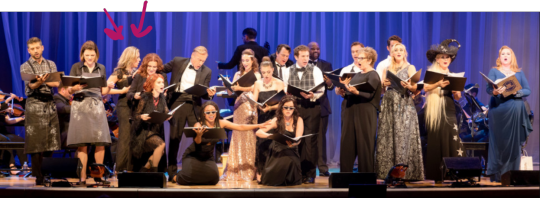
Pictured (L to R):
5. Paula Leggett Chase as Stella Deems in Follies, a one-night-only special event in Tangier, Morocco featuring a transcontinental cast of Divas. Since 2013 (excluding pandemic years), Rob Ashford has staged fundraising productions of shows such as A Little Night Music, The Crucible, and Jacques Brel is Alive and Well and Living in Paris. Confusingly, though Paula sang Stella Deems' song "Who's That Woman," she was credited in the program as Emily Whitman (presumably they just combined the roles for this production and gave them to the dancer in the cast?)

Pictured (L to R): The late Haydn Gwynn (Phyllis Rogers Stone, my beloved), Marisa Berenson (Solange LaFitte), Harolyn Blackwell (Heidi Schiller), Jenna Russel (Sally Durant Plummer), Paula Leggett Chase (Emily Whitman), Harriet Harris (Hattie Walker).
#broadwaydivastournament#sondheim#bebe neuwirth#linda emond#judith light#paula leggett chase#susan blackwell
34 notes
·
View notes
Text

"The Temptations of Christ in the Desert" by circle of Jacques Stella, circa 1600s oil on paesina stone panel 14½" x 14 inches
18 notes
·
View notes
Text
Starmania 1988 - 1991
This version of the show, darker than the previous ones, is considered by Michel Berger as the true second version (and the true update) of his Starmania
Presented first at the Paris theater then at the Marigny theater over a period of four years, it is the first attempt at a major return of the show in France

DISTRIBUTION :
Norman Groulx / Renaud Hantson : Johnny Rockfort

Martine St-Clair / Nathalie Lermitte : Cristal

Maurane / Réjane Perry : Marie-Jeanne

Richard Groulx / Michel Pascal : Zéro Janvier

Sabrina Lory : Stella Spotlight

Renaud Hantson / Solal : Ziggy

Wenta / Bruna Giraldi : Sadia

Luc Laffite / Jean-Jacques Fauthoux : Roger-Roger

Full Album :
The French public will welcome with pleasure this bringing up to date from the end of the 80s, which does not seek to forget the original casting
ESPECIALLY the untouchable Daniel Balavoine, who died in 1986 from a tragic helicopter accident

The fabulous success of the show gave rise to a tour throughout France, Belgium, Switzerland, the United Kingdom, Spain and five performances in the USSR, apparently a real triumph !

Video archives :
youtube
youtube
Liners :
youtube
youtube
FINALLY !!
the show was filmed in its entirety ...
A recording which has only one fault, the absence of Maurane The star of the show, having left the troupe after eight months of performances, due to terrible burn-out
The Full Show (with english subs) :
youtube
С русскими субтитрами :
youtube
youtube
한국어 자막과 함께 :
youtube
中国粉丝制作 :
youtube
ANECDOTES :
Réjane Perry, Maurane's liner and then replacement, is not unknown to fans of French musicals! She is the very first nurse in Romeo and Juliet 2001

...
The Princess Lady Diana attending a whirlwind performance by the troupe during a visit to the Elysée :
...
Ziggy evolves in this version, is now no longer a rock dancer ( which didn't really make sense in previous versions)
he became a rock drummer 🥁

...
The role had such an impact on Maurane that she wrote a magnificent song about her character :
youtube
For more Starmania or to discover other French musicals I invite you to follow the path of my main masterlist to learn more about French musicals and their stories :
#starmania#Starmania#Стармания#starmania 88#chinese#russian#maurane#french song#starmania version rouge#starmania red version#korean#french musicals
17 notes
·
View notes
Text

Virgin and child by Jacques Stella
#art#art history#painting#artwork#museum#museums#history#culture#vintage#baroque#religious painting#french art
102 notes
·
View notes
Text
WE HAVE THE WINNERS OF THE COMEBACK ROUND!
Congrats Sherb (34 votes), Audie (28 votes) and Ketchup (27 votes)! Hopefully your second chance treats you better than your first chance did.

As for Flora's tie, 56.9% of you voted not to bring her back for round 4. Sorry Flora.
We're now down to a small enough number of villagers that we can get the graphic going. Sherb, Audie and Ketchup are marked with a star to indicate that they were the comeback winners. Round 4 starts April 18th.
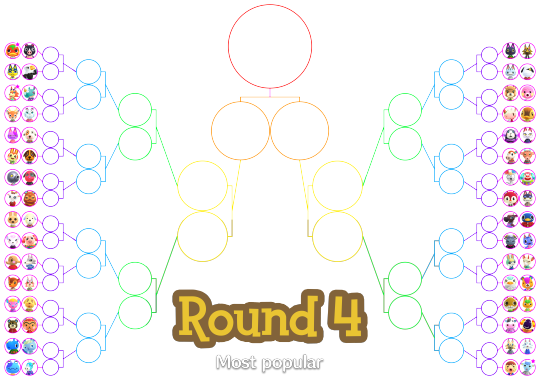
Runners up:
Ruby 20
Gayle 19
Raymond 19
Tia 19
Marshal 18
Wolfgang 16
Bluebear 13
Lily 13
Tex 13
Carmen (rabbit) 12
Peewee 11
The rest of the pack:
10 votes:
Eunice
Raddle
9 votes:
Drago
Flora
Hamphrey
Kid Cat
Mitzi
Static
Teddy
Zell
8 votes:
Bam
Scoot
7 votes:
Biskit
Drift
Kabuki
Melba
Stella
6 votes:
Erik
Gala
Gaston
Katt
Meow
Peanut
Skye
Tabby
Tom
5 votes:
Amelia
Apple
Big Top
Cece
Deirdre
Dobie
Goose
Groucho
Hippeux
Lobo
Walt
Woolio
4 votes:
Alfonso
Aurora
Beardo
Benjamin
Bill
Boots
Chief
Cube
Eugene
Freckles
Joey
Julia
Merry
Moose
Pate
Purrl
Sprocket
Tad
3 votes:
Agent S
Bella
Biff
Chadder
Chai
Charlise
Claudia
Coach
Curt
Del
Dotty
Egbert
Étoile
Filbert
Hans
Henry
Lucy
Maggie
Moe
Monique
Nan
O'Hare
Olaf
Paolo
Phoebe
Rodney
Rolf
Rudy
Savannah
Shep
Stu
Tammy
Tiansheng
Walker
Wart Jr.
Willow
2 votes:
Alice
Anabelle
Analog
Anicotti
Antonio
Bea
Bonbon
Bruce
Buck
Celia
Cheri
Chrissy
Cleo
Derwin
Diva
Felicity
Flip
Francine
Genji
Hopkins
Kidd
Margie
Pekoe
Pinky
Puck
Rasher
Ribbot
Rowan
Snake
Sterling
Stinky
Tutu
Viché
1 vote:
Admiral
Angus
Annalise
Avery
Axel
Baabara
Bettina
Billy
Bitty
Bow
Bud
Buzz
Camofrog
Canberra
Carrie
Chelsea
Chester
Claude
Cyrano
Cole
Cookie
Deena
Deli
Dizzy
Dora
Ed
Elmer
Elvis
Faith
Flo
Flurry
Frank
Frett
Friga
Fruity
Gabi
Gigi
Gladys
Gonzo
Gruff
Harry
Iggly
Jacques
Judy
Kody
Lionel
Lulu (anteater)
Lyman
Maelle
Marcel
Megan
Midge
Mira
Nana
Naomi
Nibbles
Nosegay
Octavian
Olive
Opal
Peaches
Pecan
Penelope
Phil
Pierre
Quillson
Renée
Rooney
Roscoe
Roswell
Rio
Rocket
Rod
Shari
Spork/Crackle
Tank
Tasha
Twiggy
Tybalt
Ursala
Wade
Weber
122 notes
·
View notes
Text
Siena and her opera performances - a short character study
So, I thought I might share a short little analysis of the operas Siena performed, as I’ve not seen anything like this on here before and I’ve spent some time digging into those operas for my fanfics.
I want to post a whole character analysis of Siena at some point, but the operas play an important part in highlighting Siena’s character and her relationship with Anthony, so I thought it might be interesting to dig a bit deeper into those performances. Especially when it comes to a character like her (who barely got any screentime), those few seconds of her performing make a nice addition and add some depth to her character and storyline.
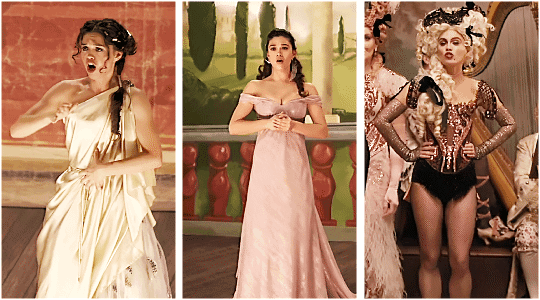
I won't focus much on the opera Siena performs in episode 1 – Gluck’s Iphigénie en Tauride – as it's not as interesting as the other two, because there doesn’t seem to be much of a connection to Siena’s character or her relationship with Anthony per se. Unlike the other operas, the focus in this scene is clearly not on her – she’s mostly just in the background, with two very short closeups, so we see that it’s her that is performing on stage. There is a deleted scene between her and Anthony according to the published script of that episode:
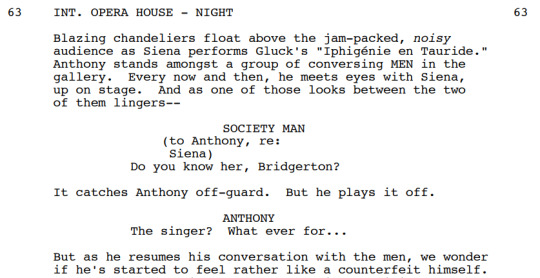
However, while I think that deleted scenes and such can make for interesting footnotes during an analysis/interpretation, I don’t like taking them too much into consideration – after all, there might be a good reason why this was deleted.
So the actual scene we see doesn’t really highlight anything in regards to Siena’s characters besides the fact that she’s an opera singer and that this is one of the only times we see her wear some brighter colors – while she’s on stage, playing a character. The other two operas she performs in episode 3 and 4 are much more focused on her character and storyline, especially her performance of I Capuleti e i Montecchi in 1.03 – this is the only time we see her perform without any of the other cast members present.
However, that’s not the only difference between Iphigénie en Tauride and the other operas. I Capuleti e i Montecchi and Les contes d'Hoffmann are also anachronistic. Iphigénie en Tauride premiered 1779, while I Capuleti e i Montecchi premiered in 1830 and Les contes d'Hoffmann in 1881.
People tend to make fun of historical inaccuracies or dismiss them as mistakes, but most times, anachronism is on purpose. I think it’s safe to assume that everyone working on this has been aware that those operas would not premiere until decades after season 1. The operas were clearly chosen for a reason.
Les contes d'Hoffmann by Jacques Offenbach (1881)
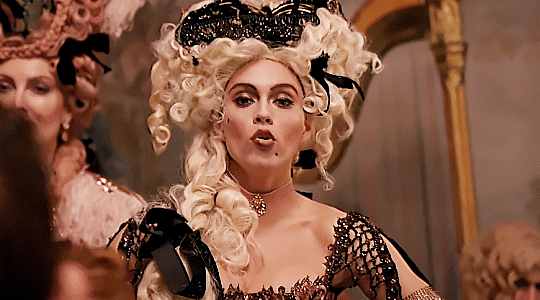
Les contes d’Hoffmann (The Tales of Hoffmann) tells the story of Hoffmann, who choses to give up on love and devotes his life to art and poetry instead. It's based on three short stories by E. T. A. Hoffmann, and some are probably familiar with the movie, but just to roughly summarize (also because there’s some important differences): At the beginning of the story, a prima donna named Stella invites Hoffmann to a meeting in her dressing room after her performance. Before the meeting, Hoffmann recounts his past great loves to his students. The opera consists of three acts, each telling the story of one of Hoffmann’s previous loves. After recollecting his stories of heartbreak, The Muse can convince Hoffmann to give his love to her (poetry) instead of visiting Stella.
There are many parallels to Siena and her relationship with Anthony here. The most obvious one is the prima donna part – Stella represents Siena. While there might not be direct similarities within the story or between Anthony and Hoffmann, the ending to Hoffmann’s story is still in some parts similar to Anthony’s. The opera ends with Hoffmann declaring that he doesn’t want to love anymore – which sounds quite similar to what Anthony says at the end of season 1.
Siena is obviously not performing the entire opera – we only see her sing “Belle nuit, ô nuit d'amour” as the courtesan Giulietta – who tries to fool Hoffmann into falling in love with her.
Storytelling-wise, it obviously does not fit Siena’s story at this point – she is not trying to fool Anthony into falling in love with her, quite the opposite. Though it does work well as a juxtaposition, especially when we see Siena noticing Anthony’s stares and she slips out of her role. There’s a clear contrast here between her performing as a devious courtesan and looking almost flustered as a result of Anthony’s gaze.
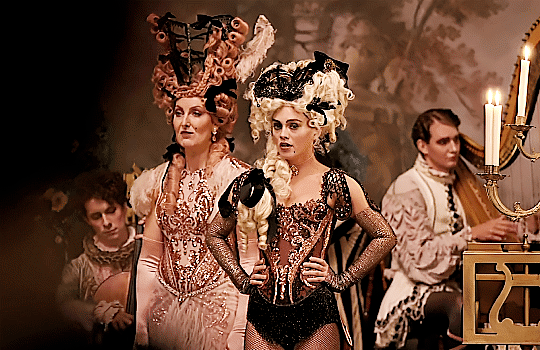
And although Siena at that point doesn’t want to seduce Anthony in any way, the piece still beautifully represents the actual scene that takes places here: Anthony longingly staring at her the very moment he recognizes her voice – almost as if under a spell (a very horny spell). Even when Violet tries to distract him, he cannot help but look in Siena’s direction. He’s completely enthralled by her here – similarly to how Hoffmann was enthralled by Giulietta. And similarly, both relationships are doomed to end unhappily.
Adding onto that, this is also the only time that we see Siena on stage where she represents exactly who she is: a courtesan. During the other two performances, she’s wearing bright, pastel gowns – very different from her usual style. The costume she wears here is also different from her usual style, which is fairly plain otherwise – but it does highlight the role she plays within society.
I find it quite interesting that this is the only time we see Anthony and Siena interact with one another during one of her performances – and one of the only times we see them interact in public altogether. This scene clearly shows the class difference between them: Anthony attending a ball as the lord he is, while Siena performs for everyone else’s entertainment, playing a seductive courtesan. They are present at the same place, yet they can’t talk to one another – there is an invisible wall between them which is highlighted by the positions they take within that scene as well as the clothes they wear. Had Siena performed any other part of that opera, she would probably have worn a pretty gown and those differences would not nearly be as noticeable. But she’s performing as a courtesan and as a result, this might be the most visible representation of her and Anthony’s differences and main conflict.
Returning to the actual story of the opera: At the end, Hoffmann explains how his three previous loves – Olympia, Antonia and Giulietta – all represent Stella. They show different aspects of the prima donna: the musician, the young girl and the courtesan. As I said, Stella represents Siena, and so do all of the other characters. In this scene, we see her visually represented as the courtesan. The show highlights this several times, especially during episode 3 when she talks to Genevieve and then later visits the gentlemen’s club and is inviting Simon to join her the next evening. Her need to find a keeper that can protect her and provide for her plays an essential role within her storyline.
Then, she’s obviously also a musician – a good amount of her scenes consist of her performances, and her character is defined by those performances. And, in the end, she’s also a young girl – and the show ensures to highlight that part as well. Through showcasing her vulnerability and emotions, we can see that she is not that different from the other young women in the show, like Daphne and Marina. They are all young, dealing with heartbreak and making decisions to secure their future. And this is in my opinion what sets Bridgerton apart from other stories of its genre. Usually, a character like Siena would only be the musician and courtesan – either sidelined or vilified. The show humanizes her, however, by granting her screentime to show her pain and struggles and even, to some extent, her innocence – which is especially well done during her performance in 1.03.
I Capuleti e i Montecchi by Vincenzo Bellini (1830)
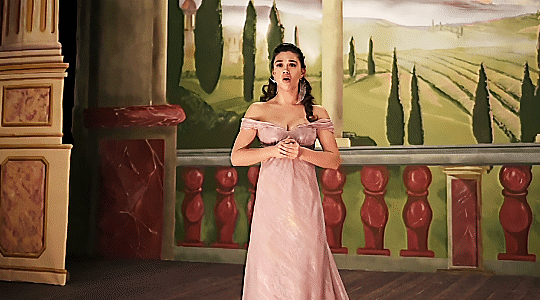
As you can probably guess by the title, I Capuleti e i Montecchi tells the story of Romeo and Juliet. I don’t think there’s a need to summarize the story, and I also think it’s pretty clear why this particular opera was chosen: Romeo and Juliet originated the star-crossed lovers trope – which is the exact trope Siena and Anthony would fall under.
There are many things I love about that scene – it’s just all around a brilliant scene, not just in relation to Siena’s character. Though I will obviously only focus on how it relates to her character here.
The aria Siena performs is “Oh! quante volte” – Juliet waiting for Romeo, begging for him to come for her. It’s quite emotional and allows for Siena’s character to express her own emotions throughout her performance.
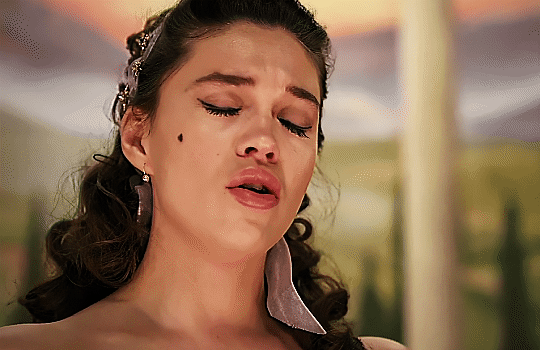
First, I adore how beautifully this ties in with the next scene. For one, because it sets up the atmosphere and essence of Siena and Anthony’s relationship – the tragedy of it all. The scene with Anthony in Siena’s dressing room underlines how this is not meant to be a love story with a happy ending, and the performance right before that amplifies this. Their story is doomed to end unhappily. And, similar to Romeo and Juliet, it is not merely a tragic story about love – it’s a story about the dangers of defying societal norms and duties and your own identities within that society.
But the dressing room scene also shows the clear differences between both stories. When Anthony visits her, Siena choses to reject him. She might have been emotional during her performance, but when Anthony showed his face, Siena did not act based on emotions but was very much rational in her words and actions. Because Anthony is not Romeo, and Siena is also not Juliet.
I also love how this performance builds a beautiful contrast to Les contes d'Hoffmann. Instead of a courtesan, Siena is playing an ingenue, wearing a pretty gown and looking all around sweet and innocent.
As the opera is in Italian, Juliet is obviously called Giulietta – just like the courtesan from Les contes d'Hoffmann. I have no idea whether this has been an accident or was done on purpose, but it’s a wonderful parallel. In both operas, she’s playing two very different women who happen to share the same name.
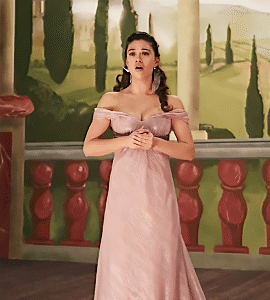
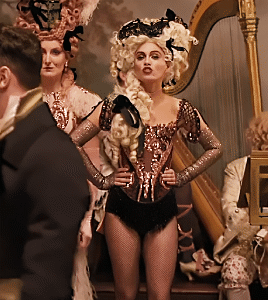
It underlines the differences between both roles but also draws a connection – which is Siena’s character.
By society, Siena is seen as the Giulietta from Les contes d'Hoffmann: the courtesan whose intentions are dubious and malicious. When Siena performs as I Capuleti e i Montecchi’s Giulietta, we can see a more vulnerable side of her as she openly cries on stage. We see her heartbroken and emotional, letting her guard down completely for a moment. In the end, it’s merely a performance. But Siena uses this performance to allow herself vulnerability – a vulnerability she is not usually allowed.
Those different performances do an excellent job at showcasing Siena’s character and also her main conflict and the different roles she plays. The chosen operas add some wonderful depth and insight into her character and I absolutely love how the shows has implemented them.
#bridgerton#siena rosso#anthony x siena#i have so many notes for analyses saved especially about siena#one day i will hopefully post that whole character study#also really want to do an analysis of the parallels between her and daphne and marina during season one#and i kinda want to dig a bit deeper into those operas too#there's definitely a lot more to focus on here#but i always need some time to actually write meta posts because I'm honestly fine just thinking about that stuff for myself#but sharing is fun too and makes for great discussions so i'm trying to post more#meta
19 notes
·
View notes
